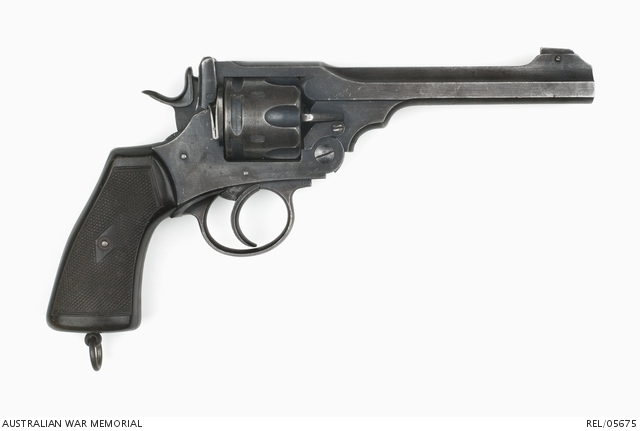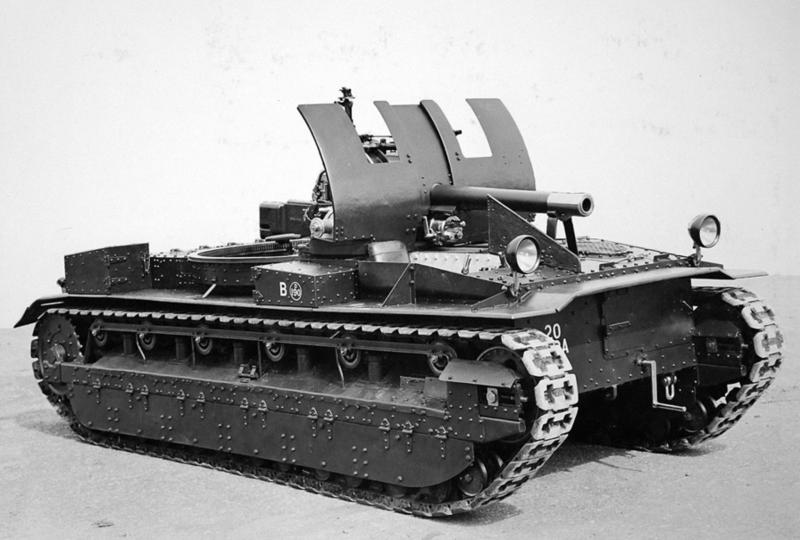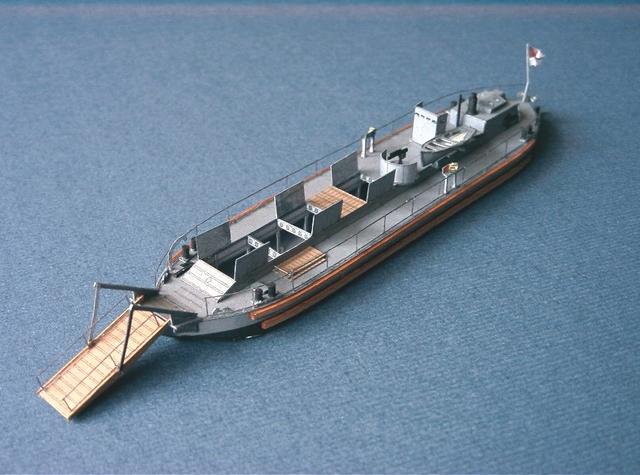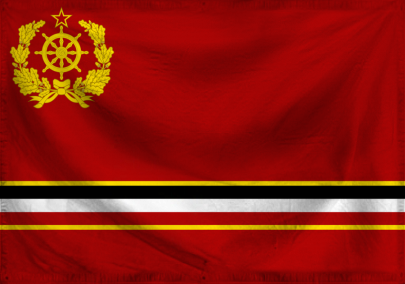
Advertisement

![]() by The Manticoran Empire » Wed Mar 16, 2022 6:46 pm
by The Manticoran Empire » Wed Mar 16, 2022 6:46 pm

![]() by Somurias » Wed Mar 16, 2022 8:01 pm
by Somurias » Wed Mar 16, 2022 8:01 pm


![]() by Aclus » Thu Mar 17, 2022 3:19 pm
by Aclus » Thu Mar 17, 2022 3:19 pm
Somurias wrote: Snip


![]() by Breyburg » Thu Mar 17, 2022 3:50 pm
by Breyburg » Thu Mar 17, 2022 3:50 pm
 Total:6,346
Total:6,346
![]() by Aclus » Thu Mar 17, 2022 4:30 pm
by Aclus » Thu Mar 17, 2022 4:30 pm































































![]() by Somurias » Thu Mar 17, 2022 5:14 pm
by Somurias » Thu Mar 17, 2022 5:14 pm

![]() by The Traansval » Thu Mar 17, 2022 5:29 pm
by The Traansval » Thu Mar 17, 2022 5:29 pm
Somurias wrote:Aclus wrote:Land claim is pretty Massive tbh mate, I’d say minimize the claim for room for new people. Also got some WW2 era gear there in your military section. Also I edited the App to add in a RP Sample section for a previous rp youve been in, if you could add to it
All right. It will be easy
Also by the way, i put the World War 2 equipment that was made before 1925 (probably not some, but most was made during WW1 or after it, but still before 1925, like Mark 1 Tank)

![]() by Somurias » Thu Mar 17, 2022 6:09 pm
by Somurias » Thu Mar 17, 2022 6:09 pm


![]() by Somurias » Thu Mar 17, 2022 6:10 pm
by Somurias » Thu Mar 17, 2022 6:10 pm
The Traansval wrote:Somurias wrote:All right. It will be easy
Also by the way, i put the World War 2 equipment that was made before 1925 (probably not some, but most was made during WW1 or after it, but still before 1925, like Mark 1 Tank)
The PPS-42, DPS-28, RPD, and a few others were made way after 1925

![]() by The Traansval » Thu Mar 17, 2022 10:51 pm
by The Traansval » Thu Mar 17, 2022 10:51 pm

![]() by Newne Carriebean7 » Thu Mar 17, 2022 11:32 pm
by Newne Carriebean7 » Thu Mar 17, 2022 11:32 pm











Krugeristan wrote:This is Carrie you're referring to. I'm not going to expect him to do something sane anytime soon. He can take something as simple as a sandwich, and make me never look at sandwiches with a straight face ever again.
Former Carriebeanian president Carol Dartenby sentenced to 4 years hard labor for corruption and mismanagement of state property|Former Carriebeanian president Antrés Depuís sentenced to 3 years in prison for embezzling funds and corruption

![]() by Arvenia » Fri Mar 18, 2022 9:57 am
by Arvenia » Fri Mar 18, 2022 9:57 am

![]() by Greater Liverpool » Fri Mar 18, 2022 12:11 pm
by Greater Liverpool » Fri Mar 18, 2022 12:11 pm

![]() by The Manticoran Empire » Fri Mar 18, 2022 2:16 pm
by The Manticoran Empire » Fri Mar 18, 2022 2:16 pm

![]() by The Imperial Warglorian Empire » Fri Mar 18, 2022 2:30 pm
by The Imperial Warglorian Empire » Fri Mar 18, 2022 2:30 pm

![]() by The Imperial Warglorian Empire » Fri Mar 18, 2022 2:32 pm
by The Imperial Warglorian Empire » Fri Mar 18, 2022 2:32 pm
Arvenia wrote:Should I either play a Mediterranean country based in the southwestern continent or a US expy based in the northwestern continent? Which one do you prefer?

![]() by The Imperial Warglorian Empire » Fri Mar 18, 2022 2:36 pm
by The Imperial Warglorian Empire » Fri Mar 18, 2022 2:36 pm

![]() by Arvenia » Fri Mar 18, 2022 6:02 pm
by Arvenia » Fri Mar 18, 2022 6:02 pm
NATION INFORMATION
Nation name: Libertian Union
National goals: Expand into eastern and southern Indianum, oppose communism, uphold national unity and promote republican and liberal democratic values.
Nation's Leader: President Elaine Pritchart
National Government: The Libertian Union is a federal constitutional presidential republic. It is headed by a President, who is elected for a term of four years. A presidential term can only be renewed once. The President is assisted by a Vice President and numerous Secretaries. These Secretaries include the Secretary of State, the Treasurer (aka Secretary of the Treasury), the Secretary of the Interior, the Secretary of Labor, the Secretary of Commerce, the Secretary of Agriculture, the Secretary of Defense and the Attorney General (aka Secretary of Justice).
The Congress is the bicameral legislature of the Libertian Union. It consists of the upper Senate and the lower House of Representatives. The powers of the two houses varies, although the House of Representatives has the same powers as any lower house, including the ability to impeach the executive and initiate any appropriation/supply-related legislation. Meanwhile, the Senate can give advice and consent to some executive decisions, try impeachment cases against government officials and ratify treaties.
The Supreme Court leads the judicial branch of the Libertian government. It is led by a Chief Justice, who is usually appointed by the executive branch.
The Libertian states are all led by Governors and have their own legislatures, departments and courts. They are additionally divided into counties and municipalities. There are currently 30 states in the country, which are New Hanover, Lemoyne, Ambarino, New Austin, New Mastupia, Dixon, Calisota, Lakoht, North Yankton, South Yankton, Clampshire, Westhaven, Metaxas, Fremont, Tennessippi, Concordia, Doventry, Bothana, Pentario, Olderney, Wichigan, Garyland, Virginia, Hoosevelt, Missichussetts, Mohiana, Basconsin, Nebsaroka, Wellington and Shore Island.
The major political parties in the Libertian Union are the conservative Democrats, the liberal Republicans and the progressive Populists. Both Democrats and Republicans have been the dominant parties in the country since the mid-1860s, while the Populists are a new party that was formed in the early 1900s.
National history: Click here for details
Territory: Click here for details
Language: English
National Religion: Church of the One (aka "Unitarianism")
National Culture/Identity: Libertia is clearly a melting pot of numerous cultures such as Aclo-Libertian (Anglo-American), Breyburgian, Warglorian, Rannorian, Sylbanian, Twelver, Afrikaan-Libertian (African-American) and Native Indianumese (Native American).
National Pastime: Whatever pastime Americans have.
National holiday: Numerous holidays, especially Independence Day (July 4), Thanksgiving, Black Friday, Labor Day, Memorial Day and St. Angus' Day.
Nation's Population: ~105,000,000-115,000,000
Allies: Breyburg
Frenemies: Aclus and Hoosier
Enemies: Naakhota and ARN
Political issues: Territorial expansion, social inequality, economic inequality and crackdown on communist activities
Chance of revolt: Minimal
Greatest Victories: Battles of Maxington and Hancord (1775), Siege of Blackwater (1775), Battle of Tarasoga (1777), Battle of the Roanoke (1781), Siege of Yorkville (1781), Battle of New Atreides (1815), Battle of Armadillo (1848), Battle of Pattysburg (1863), Siege of Rittersburg (1864-1865), Defense of Udana (1898) and Rannorian Front (1917-1921)
Most Embarrassing Defeats: Siege of New Aclusia (1775) and Battle of Fort Hauter (1861)

![]() by Arvenia » Fri Mar 18, 2022 6:51 pm
by Arvenia » Fri Mar 18, 2022 6:51 pm
MILITARY STATISTICS (WIP)
Military Statistics, Manpower
Armed Forces
Total Forces: 2,533,840 personnel and 1,543,740 reserve personnel
Army: 2,400,000 active personnel and 1,500,000 reserve personnel
Navy: 69,720 active personnel and 25,510 reserve personnel
Marine Corps: 59,190 active personnel and 13,210 reserve personnel
Air Forces: 4,930 active personnel, 5,020 reserve personnel and 2,450 aircraft
Military Statistics, Equipment
Handguns
Colt M1892 Revolver
Colt M1917 Revolver
Colt M1915 Semi-Automatic Pistol
Gracey M1907 Semi-Automatic Pistol
Shotguns
Spencer M1882 Pump-Action Shotgun
Manchester M1887 Lever-Action Shotgun
Manchester M1912 Pump-Action Shotgun
Washington Model 10 Pump-Action Shotgun
Gracey Auto-5 Semi-Automatic Shotgun
Rifles
Manchester M1886 Lever-Action Rifle
Manchester M1892 Lever-Action Rifle
M1903 Bakersfield Bolt-Action Rifle
M1905 Ross Bolt-Action Rifle
M1917 Seinfield Bolt-Action Rifle
Harrington M1910 Semi-Automatic Rifle
Submachine Guns
M1919 Annihilator Machine Gun
M1921 "Street Sweeper" Submachine Gun
Machine Guns
Colt-Gracey M1895 Machine Gun
Udana M1898 Machine Gun
M1915 Colt-Vickers Machine Gun
Huot Automatic Rifle
Knives
M1905 Bayonet
M1917 Bayonet
M1917 "Knuckle Duster" Trench Knife
M1918 "Mark 1" Trench Knife
Grenades
Mk 1 Fragmentation Grenade
Mk 2 Fragmentation Grenade
Mk 3 Concussion Grenade
Artillery Guns
37 mm Infantry Gun Model 1917
16-inch Gun M1895
14-inch Gun M1907
75 mm Gun M1916
75 mm Gun M1917
3-inch M1902 Field Gun
240 mm Howitzer Model 1918
Hilton 6-inch Mortar
Tanks
M1917 Light Tank
M1918 Light Tank
T2 Medium Tank
Mark VIII Tank
Armored Cars
Ford FT-B Armored Car
Vickers Crossley Armored Car
Ships
Proteus-class Aircraft Carrier
Maxington-class Aircraft Carrier
Pentario-class Battleship
Nebsaroka-class Battleship
Yankton-class Battleship
Virginia-class Battleship
Calisota-class Battleship
Olderney-class Battleship
Missichussetts-class Battleship
Tennessippi-class Cruiser
Pentario-class Cruiser
Hanover-class Cruiser
Cassin-class Destroyer
Paulding-class Destroyer
T-class Submarine
N-class Submarine
R-class Submarine
Blackwater-class Airship
Akron-class Airship
Shenandoah-class Airship
J-class Blimp
Airplanes
Packard-Septère SLUAC-11 Fighter Plane
Curtiss 18-T "Kirkham" Fighter Plane
Boeing Model 15 Fighter Plane
Curtiss P-6 "Hawk" Fighter Plane
Curtiss A-3 "Falcon" Attack Plane
Curtiss C-1 "Yankton" Bomber Plane
Curtiss B-2 "Condor" Bomber Plane
Martin MB-1 Bomber Plane
Douglas DT Bomber Plane
Felixstowe F5L Patrol Plane
Douglas O-2 Observation Plane
Loening LO Observation Plane
Martin MO Observation Plane
Boeing NB-1 Trainer Plane
Douglas C-1 Transport Plane
Curtiss NC Flying Boat
Curtiss HS Flying Boat
Military Statistics, Organization
High Command
Commander-in-Chief of the Libertian Armed Forces: President Elaine Pritchart
Chairman of the Joint Board: General Tom Hardwick (Libertian Army)
Land Forces
Chief of the General Staff (Libertian Army): Major General John L. Bynes
Chief of the Militia Bureau (Libertian National Guard): Major General George R. Collins
Naval Forces
Chief of the Naval Staff: Admiral Edward J. Eberle
Commandant of the Coast Guard: Rear Admiral Rickard F. Chillard
Marine Corps/Naval Infantry
Commandant of the Marine Corps: Major General Paul O. Lejeune
Air Forces
Commandant of the Air Corps: Major General Jason Patrick

![]() by The Manticoran Empire » Sat Mar 19, 2022 10:38 am
by The Manticoran Empire » Sat Mar 19, 2022 10:38 am

![]() by The Imperial Warglorian Empire » Sat Mar 19, 2022 4:44 pm
by The Imperial Warglorian Empire » Sat Mar 19, 2022 4:44 pm
Somurias wrote:NATION INFORMATION
Nation name: Somuriasian Federation
National goals: Becoming Military Superpower
Nation's Leader: Dimitry Nikolayevich Petrunov
National Government: Somurist Federation, which is a government where the senate owns 2/5 of president's power. The senate and People's Representative, will be debating about the people's complains about the government every 5 years after the election ended, to make sure the government can fulfill the demand of it's people, and after the debate is over, the senators and the representatives must give their votes about the new law. After the voting ended, a senator from the leading government will give the new law proposal to the president and their cabinet members, to be discussed again. If it was accepted, a new law will be added
National history: Somurias was a former monarchy country, that have failed to serve it's people. The people revolted, and the Somurist system was introduced by a former royalist general, after the communist won the civil war. The system was supported by the majority of people, and thus the people began protesting against the communist. The communist regime fall, and Dimitry Nikolayevich Petrunov was elected as the first president of Somurias
Territory: You can see it here
Language: Russian
National Religion: Orthodox Christianity
National Culture/Identity: Somuriasian
National Pastime: Sword dueling
National holiday: The Workers' Day (July 10), The Somurist Day (January 5), and Armed Day (March 15)
Nation's Population: 172,394,296 lives
Allies: n/a
Enemies: Every country led by authoritarian government
Political issues: Pretty high corruption, government focused on military spending, and death rate
Chance of revolt: No
Greatest Victory: Battle of Somursk, when the outnumbered rebel army, won against the superior Imperial Army
Most Embarrassing Defeat: Battle of Vincegrad, when the Somuriasian army is retreating just because of a fog caused by horses running in the field (they thought the fog is caused by guns or enemy cavalries)
MILITARY STATISTICS
Military Statistics, Manpower
Armed Forces
Total Forces: 1,250,950 soldiers
Land Force: 1,050,000 soldiers
Navy: 200,000 crews and 256 ships
Air Force: 950 pilots and 570 planes
Reserve: 500,000 soldiers
Manpower: 2,000,000 people
Military Statistics, Equipment
Anything and Everything your military uses, put it here. Images, specifications, etc.
Mosin-Nagant M1891/30
PM M1910
Model 1914 Grenade
Morriss portable flamethrower
Lewis M1914
Hotchkiss M1914
Colt–Browning M1895/14
Chauchat M1915
Mark 1
76 mm mountain gun M1909
76 mm divisional gun M1902/30
War train
Military Statistics, Organization
High Command
Commander in Chief of Imperial Armed Forces: President Dimitry Nikolayevich Petrunov
Land Forces
1,000,000 soldiers total
500,000 soldiers
200,000 machine gunners
400 Mark 1 Crews (each Mark 1 is operated by 8 people)
200,600 mounted soldiers
Naval Forces
50,000 coastal force
150,000 crews
Marine Corps/Naval Infantry
50,000 marines
Air Forces
950 pilots
Name: Dimitry Nikolayevich Petrunov
Age: 27 years old
Sex: Male
Nation of Origin: Somurias
Position or Profession: President
Appearance (Images preferred):
(Image)
Bio: Dimitry Nikolayevich Petrunov, is a 27 years old president of Somurias, which was elected by the people to become the first president of Somurias. His father, Semyon Leonid Petrunov is a farmer, while his mother, Nikolayeva Katarina Petrunova is a teacher. He was bullied by his fellow colleagues when he was 9 years old. When he reach the age of 13, he cannot continue his education, but that thing did not stop Dimitry from learning
He learned more about things, and then he learned about the history of the kingdom of Somurias. He then questioning, why did the monarchy exist? When he reach the age 15 years old, he's smarter than a people with the same age as his age. Although a war broke out, and Dimitry was forced to join the military. When the war is over, he hold the rank captain of the Imperial Army.
When he was 19 years old, he fought for the communist against the king, and succeeded. He achieved the rank general of the Red Army. Although a former royalist general had stole his attention. He listen to what the general said, and then he become one of the somurist supporter. Protest happened, and he was deployed to Somursk, to protect the government members from the protesters, but instead of protecting them, he and his army, joined the protesters against the communist regime
The communist regime fell. Someone suggested that Dimitry should joined the 1920 election, and he was elected as the first president of Somurias. He did several reformations, and constructing more factories, and lead Somurias to it's golden era
Quirks:

![]() by Guuj Xaat Kil » Wed Mar 23, 2022 8:29 am
by Guuj Xaat Kil » Wed Mar 23, 2022 8:29 am

![]() by Arvenia » Wed Mar 23, 2022 9:00 am
by Arvenia » Wed Mar 23, 2022 9:00 am
Guuj Xaat Kil wrote:C'mon lads don't let this go to waste man, c'mon come and post.

![]() by The Manticoran Empire » Wed Mar 23, 2022 4:40 pm
by The Manticoran Empire » Wed Mar 23, 2022 4:40 pm
Guuj Xaat Kil wrote:C'mon lads don't let this go to waste man, c'mon come and post.
Advertisement
Return to Portal to the Multiverse
Users browsing this forum: Cessarea
Advertisement